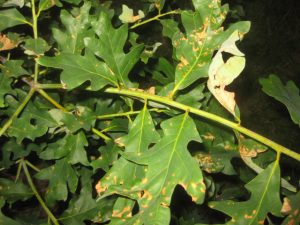Q. I would like to know how to care for a potted orchid I received on Mother’s Day. I don’t know anything about them or what to expect.
A. Orchids belong to a large family of plants – there are over 20,000 species and more than 100,000 cultivars! There are four basic types of orchids. The proper temperature, watering and fertilizing schedules vary, depending on the type. Most orchids sold as houseplants are classified as epiphytes, which grow chiefly on trees in nature. Less commonly, other species of orchids are terrestrials, sending their roots into soil or sand; lithophytes, clinging to the surfaces of rocks; and saprophytes, growing in decaying vegetation on the forest floor.
Your plant is likely one of the epiphytic orchids, typically potted in tree-bark chips or clay pebbles. To thoroughly moisten this type of media, it’s easiest to take the pot to a sink and soak. Then allow the plant to dry somewhat before watering again.
The American Orchid Society has photos and fact sheets that can help you determine which orchid you have and the appropriate cultural requirements.
Q. I have very big, strong, beautiful tomato plants, but when the yellow blooms come on, they just dry up and fall off. We have about 8 plants and probably only 9 tomatoes total. A friend that lives about 10 miles away is also having this problem.
A. Tomato plants dropping blossoms without setting fruit is usually related to temperature – either too hot or too cold. Tomato pollen becomes ineffective when temperatures are below 55 degrees F or above 90 F. Most early-season cultivars are tolerant of cool temperatures but may have problems with hot weather. Likewise, the recent spell of low nighttime temps could cause mid- to late-season cultivars to drop blossoms. If tomato flowers are not pollinated, they will drop off the plant. But as temperatures are more favorable, fruit set should resume.
Q. Something is causing yellowing on the leaves of my young white oak tree. Any idea what my problem is?
A. It is difficult to diagnose a specific cause from just these spots. Yellow and/or brown spots are vague symptoms potentially caused by disease, insect pests, chemical damage or environmental stress. It’s a bit like when humans get a headache – it’s a symptom that can be caused by many potential problems. We need a lot more background information on this tree, for example: When were symptoms first noticed? Are other plants nearby affected, or just this one?
The good news is that, in general, leaf spots are not likely to be fatal to otherwise healthy trees. In this case, a fungal disease called anthracnose is a possibility, given the weather this year, but I can’t confirm from just the photos. Additional information on anthracnose of shade trees is available at http://www.extension.purdue.edu/extmedia/BP/BP_9_W.pdf.
At this late stage of the growing season, we would not likely recommend applying any controls. If the symptoms worsen or return next year, you could bring samples of the trees to your the Purdue Extension office in your county to see if educators might be able to diagnose it. If not, you can submit samples to the Purdue Plant & Pest Diagnostic Laboratory (digital images as well as real plant specimens are helpful). For information on fees and how to submit samples, visit www.ppdl.purdue.edu.
